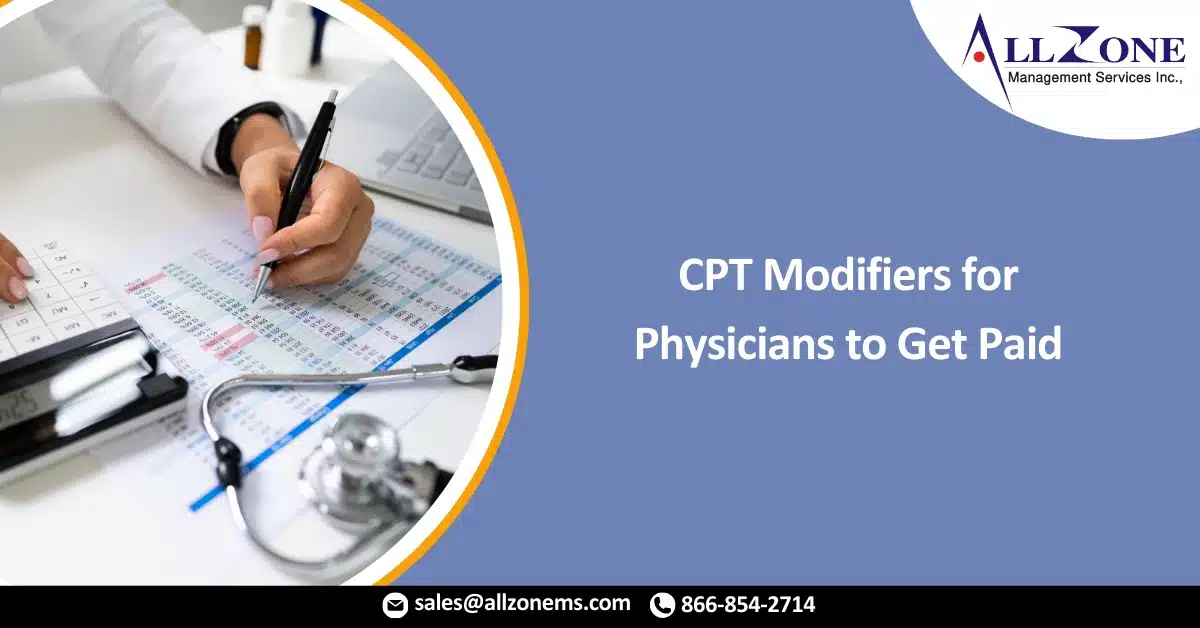During a typical office visit, physicians may provide evaluation and management (E/M) services, minor procedures and more. The question is: Can they bill for each one separately? In some cases, the answer is no. In others, though, the answer is yes — but they must know what current procedural terminology (CPT) modifier to append. Modifiers communicate this important message to payers: Pay me for services that wouldn’t normally warrant separate reimbursement.
However, incorrectly appending these modifiers can lead to payment denials and open practices up for greater payer scrutiny. Consider these two important modifiers and the advice below on how you can use them to get paid correctly.
Modifier -25
What it means:
A physician performed a significant, separately identifiable E/M service on the same day of a procedure or other service.
How to use it correctly:
This is how I always explain it: If the presenting problem is entirely resolved by the procedure, you just bill the procedure
For example, a patient presents with hearing loss, so a physician examines their ears, sees impacted cerumen and decides to remove it. After the removal, the patient can hear again. In this case, only the cerumen removal is billable. However, if the patient also had a sore throat that required treatment, a separate E/M with modifier -25 may be warranted. The same is true if the patient still couldn’t hear after the cerumen removal, and the physician ordered a hearing test.
Here’s another common scenario: A patient presents for a flu shot. If the physician only administers the vaccine, only the vaccine is billable. However, if the patient also mentions they’ve had a rash on their abdomen during the encounter, the physician may be able to bill a separate E/M service with modifier -25 for addressing the rash.
Similarly, when a physician performs a steroid injection for knee pain, they shouldn’t bill a separate E/M code. This is a big issue in primary care. The decision to perform a minor procedure is included in the procedure. You can’t just automatically tack on an E/M code and bill it with a modifier -25.
However, there are always exceptions. Example: A patient presents with knee pain, and a physician gives them a steroid injection. However, during the encounter, the physician also decides to prescribe medication and considers ordering an MRI because they suspect there could be a larger injury. In this case, there may be a separately identifiable E/M service.
Weight management or obesity screening and counseling (i.e., CPT codes 99401-99404) with an E/M office visit is another area of confusion. If the patient is coming in for weight management and that’s all you’re doing, that doesn’t justify billing an office visit code. An exception would be if the patient presents for weight management and complains of leg pain. In this case, a separate E/M visit code may be warranted.
When using modifier -25, the best practice is to separate documentation for the E/M service from documentation for the separate procedure. There should be two separate procedure notes. It shouldn’t all be rolled into the E/M service.
However, knowing your payer policies is also critical. For example, some commercial payers have policies stating you can’t ever bill a level two E/M service on the same day as a minor procedure. A minor procedure includes some component of E/M. Often, a level two E/M service is not significant and separately identifiable.
Other times, payers deny claims with modifier -25 as a matter of policy, or they automatically require additional documentation before paying the claim. Similarly, payers may never cover weight management counseling separately, or they may require a specific body mass index.
There’s also the issue of diagnosis codes. Although two different diagnosis codes aren’t required to report modifier -25, some payers might automatically deny claims when physicians only report one diagnosis code. Providers may need to appeal these cases and submit documentation to prove they did the separate evaluation.
In many cases — but not all —two different diagnoses may be warranted. When a physician performs a separate E/M service, they should report one or more diagnosis codes for the separate problem, along with a Z00.01 for the AWV with abnormal findings. For example, if the physician discovers the patient has hypertension and decides to prescribe a medication, they should report the E/M service with I10.
Modifier -24
What it means:
A physician performed an unrelated E/M service during a postoperative period.
How to use it correctly:
It is important to understand global periods for minor procedures. Each code in the surgery section of CPT has a global period indicator. This means all services related to the procedure are included in those days and cannot be billed separately. More specifically, some procedures have a 90-day global period, whereas others have a 10-day or zero-day period, meaning nothing related to the procedure is separately billable on the day of the procedure.
Consider the following global day designations for common minor procedures:
Minor procedure/CPT code/Global day designation
- Cerumen removal/69209-69210/0
- Joint aspiration and/or injection/20610/0
- Foreign body removal/10120-10121/10
- Laceration repair/12031-12057/10
- Incision and drainage/10140/10
Here’s where modifier -24 comes in. If the service is within the global period but unrelated to the procedure, physicians may be able to append modifier -24 to the E/M code so they can get paid separately. A question before separately reporting an E/M code with modifier -24: Is the service standard pre- and postoperative care for the procedure? “If the answer is yes, that’s not enough for a separate E/M service.
Another question to ask is: Am I reporting two different diagnosis codes? If so, modifier -24 may be warranted. Example: A patient has a laceration repair, then presents with a sinus infection three days later. Even though you’re within the global period, it’s clear why a separate E/M service was warranted.
For More Information: https://www.medicaleconomics.com/view/use-these-two-cpt-modifiers-to-get-paid-correctly

